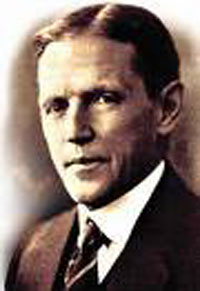Myopia, or nearsightedness, is a major problem. Nobody can really understand how debilitating it is without having experienced it.
You have made the right first step in searching for information on how to reverse it. Yes, it can be reversed. I’ll go ahead and say that right away, that you are right in your intuition that myopia is a problem that you can fix yourself by doing the right things.
One of the first phrases that you may have started looking for is “eye exercises”. Everyone has heard that term, even if they don’t know exactly what it might mean. Maybe stretching? Maybe lots of movement? Training? If you continue on your search using that phrase, you will find something quick and easy that will appeal to you at first, because it sounds simple. But it isn’t going to work.
Eye exercises are not the route to reversing myopia. There’s something else that’s much better for myopia but is a little more involved, and that you have to learn.
But before I throw everyone under the bus who promotes a pretty good method that they refer to as “eye exercises”, let me be clear. If you mean ‘exercise’ as a way to physically strength the eyes, much like you would strengthen other muscles by repetitive exercises, then you’ve got the wrong idea. The eyes are already plenty strong enough to accomplish the task. They can move around quickly and effortlessly. If your eyes seem to get tired, it has a lot to do with what you’re doing, or more specifically the way you’re using your eyes while you’re doing it.
 Another usage of the term ‘exercise’ is used a lot by school teachers, where anything that the students needs to practice or work through is called an exercise. So these are mental exercises, because of course it isn’t about what it takes to move the pencil, but about making connections in the brain and understanding the relationship between things and how things work.But with the methods promoted on this site, these types of mental exercises are still not the whole picture. While it’s good to repeat things that are helpful, the idea is to incorporate a new way of using your eyes into your daily life, so that you don’t have to think about it once you have integrated it into your way of doing things.
Another usage of the term ‘exercise’ is used a lot by school teachers, where anything that the students needs to practice or work through is called an exercise. So these are mental exercises, because of course it isn’t about what it takes to move the pencil, but about making connections in the brain and understanding the relationship between things and how things work.But with the methods promoted on this site, these types of mental exercises are still not the whole picture. While it’s good to repeat things that are helpful, the idea is to incorporate a new way of using your eyes into your daily life, so that you don’t have to think about it once you have integrated it into your way of doing things.
See the method here for reversing myopia.
But what else is out there?
Sure, it’s worth mentioning other programs you’ll find out there. This one is free (as of writing). You can fork over hundreds of dollars to companies selling kits or programs that you have to go through to learn how to improve your vision. It is NOT that complicated. You don’t have to get a whole education on eyesight to just learn how to use your eyes!
The most popular method in recent years was the See Clearly Method. I didn’t buy the whole kit, but I did buy one book by the authors, and from what I hear I got the gist of it from the book. And I wasn’t impressed. The book truly was eye exercises. They kind of mashed together everything they could find, didn’t offer any real explanation of why all of it was important, but it sort of sounded good if you weren’t looking for any coherence or consistency to the approach. It was a shotgun approach, so to speak, and such an approach reveals the lack of understanding of the author.
You will find endless amounts of internet scams out there selling eye exercises, or maybe by now a lot of them are saying “But wait! This isn’t eye exercises! This is something entirely different!” to differentiate themselves from the competition. Then you buy it, and sure enough, it’s eye exercises.
I hope this helps in redirecting many people who are looking to exercise their eyes and just need to be steered towards a better solution.
get help on our Facebook Group!

I founded iblindness.org in 2002 as I began reading books on the Bates Method and became interested in vision improvement. I believe that everyone who is motivated can identify the roots of their vision problems and apply behavioral changes to solve them.
